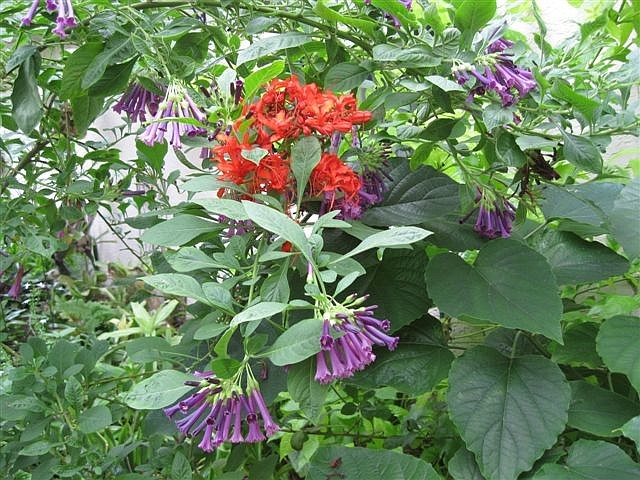- December 15, 2025

We have had some welcome rain in the past week to reinvigorate our landscape plants. August is usually a hot month, so if the afternoon showers don’t continue, water your plants regularly, especially those in hanging baskets and containers.
If you are growing poinsettias in your garden, the next few weeks are the last time you can prune your plants to allow time for the buds to form for winter bloom. You should continue fertilizing your poinsettias monthly with a balanced fertilizer until October.
It’s time to fertilize your palms again with a balanced slow-release granular fertilizer that contains at least 3% magnesium. If some of the older fronds are yellow, it may indicate a mineral deficiency, most likely in magnesium or potassium, so apply a special palm fertilizer containing these micronutrients.
Crepe myrtles have been bursting with summer blooms all over the city in medians and in residents’ yards. Many are setting seed now, and the round seedpods weigh the limbs down, making them sag. You can cut off the seedpods at the base of the flower stalk to relieve this stress, and in doing so, you may get a second flowering.
Yards are in full bloom with many interesting perennials. One particular group of plants I like enjoy are the clerodendrums, which include bleeding heart, blue butterfly bush, glory bower and pagoda flower. This tropical genus of shrubs and vines is grown for their colorful (blue, pink, red, salmon, white) exotic-looking flowers which are produced in big, showy clusters. They are easy to grow in a partially shaded site with some direct morning or afternoon sunshine. They multiple freely, so beware that many can be aggressive as they spread by underground stems. During winter freezes, they may die back, but come up in the spring.
Now is the time to plan your fall vegetable garden. You can start planting some crops, such as broccoli, collards, eggplant, okra, onions, peppers, pole beans, southern peas, summer and winter squash and sweet corn.